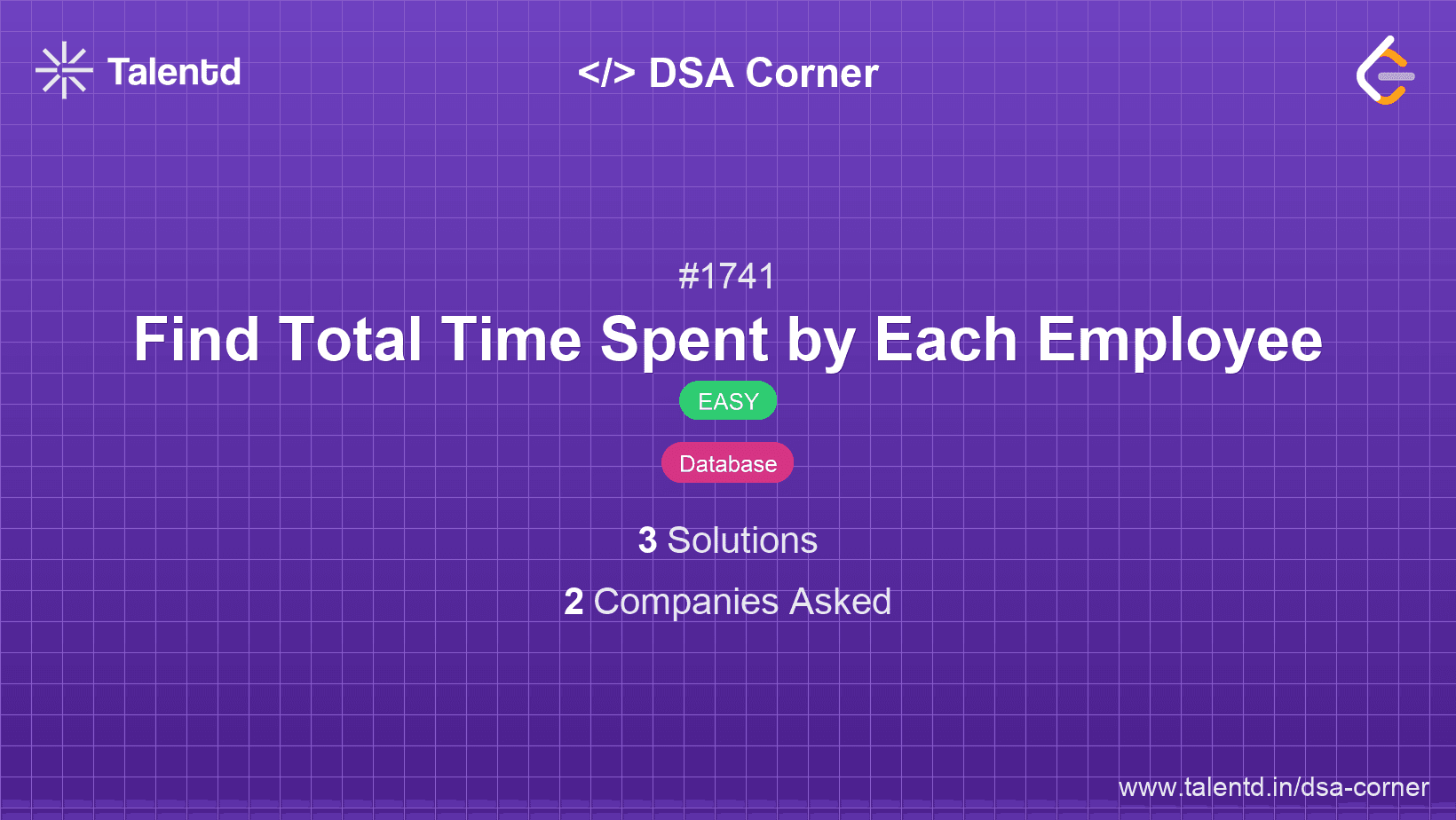
Sponsored
Sponsored
This approach involves using SQL capabilities to group and aggregate data based on unique 'day' and 'emp_id'. The total time spent by each employee on each day is obtained by summing the difference between 'out_time' and 'in_time' for each of their records. The SQL GROUP BY clause is utilized to group the data.
The time complexity depends on the SQL database engine but is generally O(n log n) due to grouping. There is no extra space complexity aside from the result set.
1SELECT event_day AS day, emp_id, SUM(out_time - in_time) AS total_time FROM Employees GROUP BY event_day, emp_id;In this SQL query:
event_day is aliased as day for the result set.SUM() function calculates the total minutes spent by each employee by summing the differences of out_time and in_time for each record, grouped by event_day and emp_id.This approach uses standard programming techniques to aggregate data. The process involves:
The time complexity is O(n) where n is the number of records, as it involves iterating through each record once. The space complexity is also O(n) due to the storage in the result dictionary.
1function calculateTotalTime(employees) {
2
This JavaScript function processes employee entries to calculate total times as follows:
result is used to sum the time durations, where the key is a combination of day and emp_id.Object.values(result) extracts the aggregated records into a list.